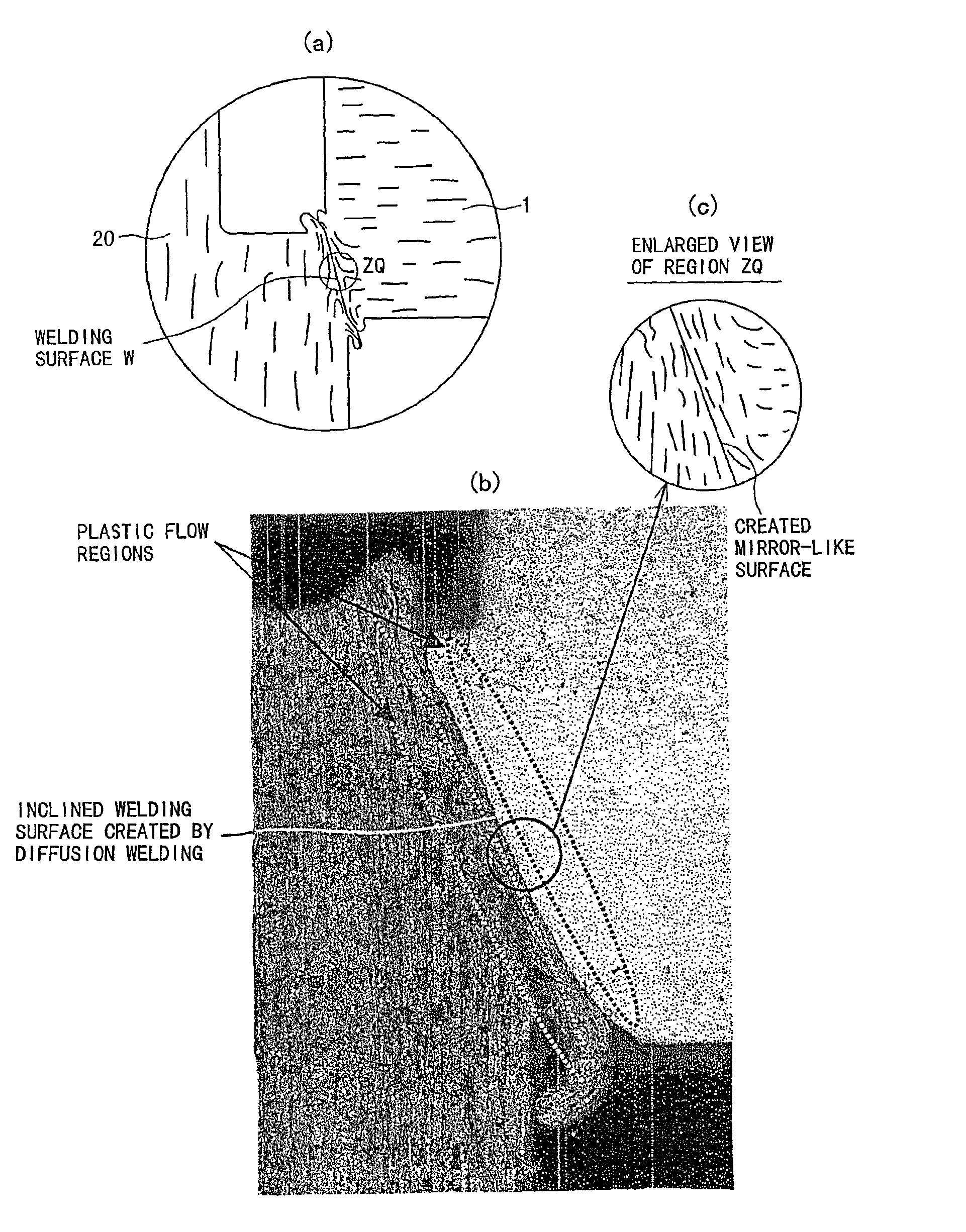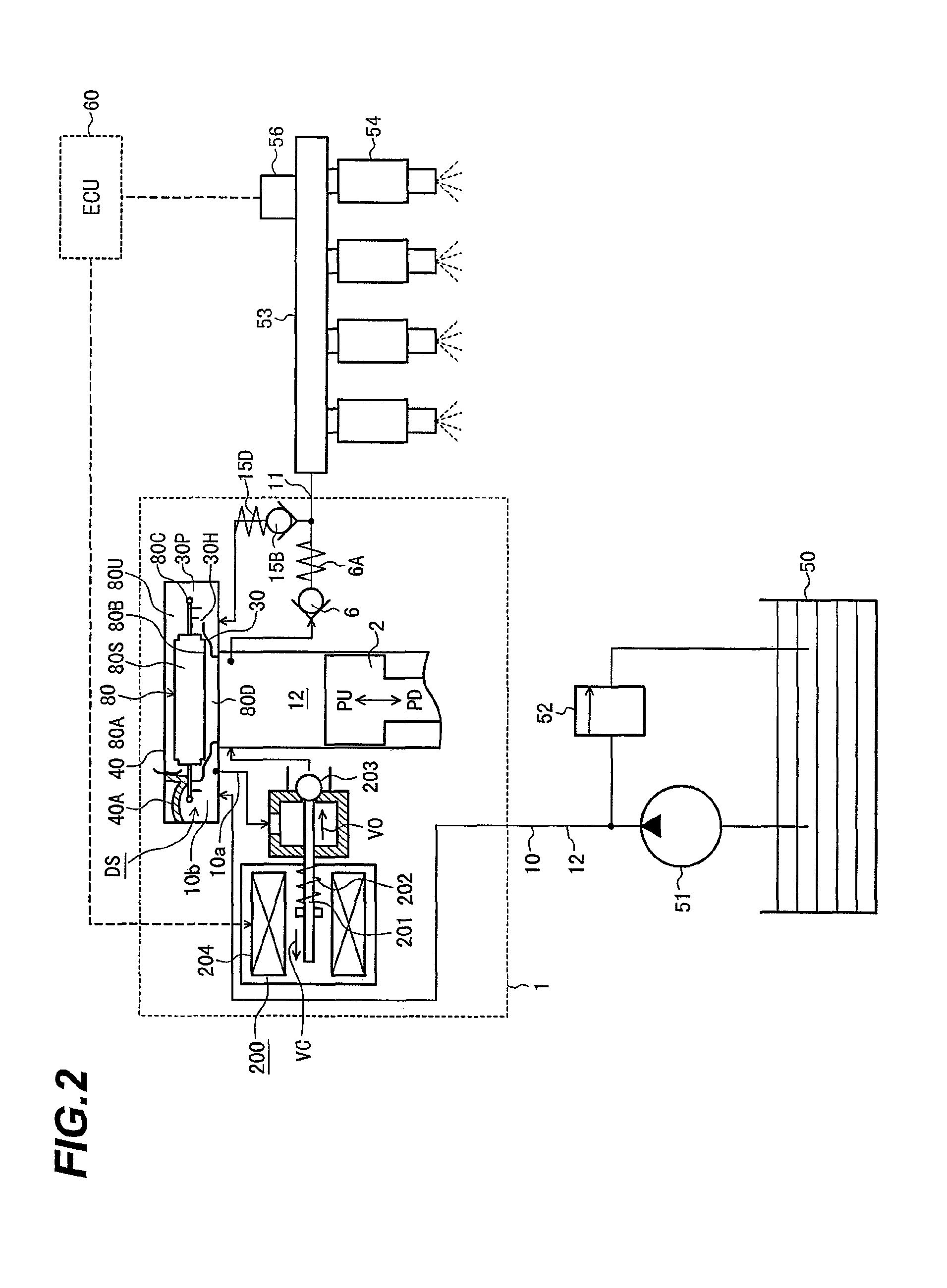High-pressure fuel supply pump and the manufacturing method
a technology of high-pressure fuel supply and manufacturing method, which is applied in the direction of fuel injecting pump, machine/engine, non-electric welding apparatus, etc., can solve the problems of insufficient fluid sealability and insufficient connection strength, unsuitable connection method for magnetic circuit, and inability to maintain initial design dimensions, etc., to achieve strong vibration resistance, high sealing reliability, and large welding force
- Summary
- Abstract
- Description
- Claims
- Application Information
AI Technical Summary
Benefits of technology
Problems solved by technology
Method used
Image
Examples
embodiment
Sixth Mode of Embodiment
[0133]The welded structure of two metals according to the first mode of embodiment, wherein both metals are formed of a material different from each other in hardness, the weld surface of the harder metal is formed into a convex shape, and the weld surface of the softer metal is formed into a concave shape.
[0134]How the welded structure is constructed at various connections in the high-pressure fuel supply pump shown in FIG. 1 will be next described for each of the connections.
[0135]1) First, the connection 10w between the intake joint 10 and the pump housing 1 is described below per FIG. 1.
[0136]The intake joint 10 has, at a distal end thereof, a tapered weld surface 10M formed of a part of a conical surface.
[0137]Welding between the intake joint 10 and the pump housing 1 is achieved using the welding method discussed earlier per FIGS. 3 and 4.
[0138]More specifically, the intake joint 10 and the pump housing 1 are joined together by applying a high voltage w...
first embodiment
[0285]A welded structure formed in solid-state welded form by first providing an inclined abutting surface upon both of two metals to be joined together by resistance welding, then after connecting an electrode of different polarity to each metal and heating both metals with an electric current and frictional pressurizing, creating an alloy zone (diffusion zone) at a contact interface of that connection.
second embodiment
[0286]The welded structure according to the first embodiment, wherein the abutting surfaces are formed into an inclined annular shape and both metals are joined together so as to match respective central axes to each other along the inclined surfaces when pressurized and joined.
PUM
| Property | Measurement | Unit |
|---|---|---|
| voltage | aaaaa | aaaaa |
| pressure | aaaaa | aaaaa |
| axial relative displacements | aaaaa | aaaaa |
Abstract
Description
Claims
Application Information
 Login to View More
Login to View More - R&D
- Intellectual Property
- Life Sciences
- Materials
- Tech Scout
- Unparalleled Data Quality
- Higher Quality Content
- 60% Fewer Hallucinations
Browse by: Latest US Patents, China's latest patents, Technical Efficacy Thesaurus, Application Domain, Technology Topic, Popular Technical Reports.
© 2025 PatSnap. All rights reserved.Legal|Privacy policy|Modern Slavery Act Transparency Statement|Sitemap|About US| Contact US: help@patsnap.com



